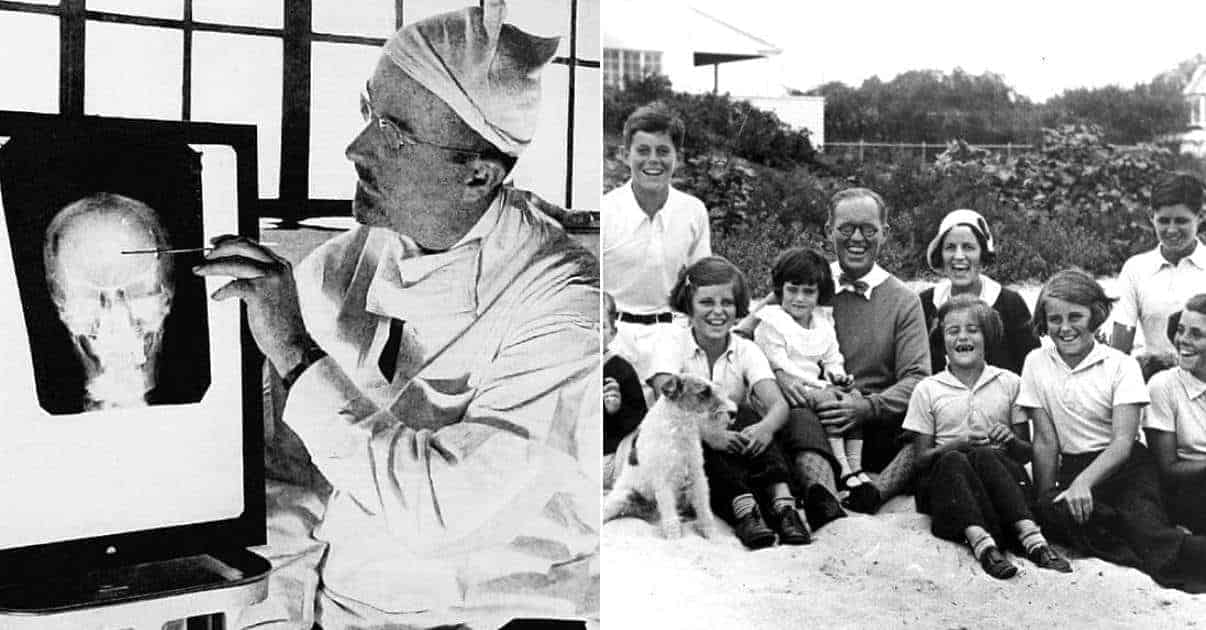The operation known as a lobotomy was developed by a Portuguese neurologist, for which he was awarded a Nobel Prize despite the procedure’s highly controversial nature. Even in its heyday, during the late 1940s through the 1950s, the results of the procedure were inconsistent. Some patients died during the procedure, some shortly after complications of the operation, and others later by suicide. One of its leading practitioners, Dr. Walter Freeman, called the operation “surgically induced childhood. Dr. Freeman developed what he called an improved procedure in which he gained access to the brain via the eye sockets which was called a transorbital lobotomy using a surgical tool resembling an icepick. Prior lobotomies required removal of a portion of the skull, a procedure known as a prefrontal lobotomy.
While some patients were able to resume a semblance of normal life following the procedure, which was most often used as a treatment for schizophrenia, most did not. More lobotomies were performed on women than men, and it is estimated that 50,000 were performed in the United States alone before the procedure fell into disfavor. The belief espoused by Freeman, (who was not a trained surgeon) was that the operation eliminated “excess emotion” and left the patient more stable and thus more manageable. Some famous people underwent lobotomies or were made famous by the procedure.

Here are ten examples of persons who underwent lobotomies and the impact of the operation on their lives.

Eva Peron
Eva Peron was the wife of Argentine President Juan Peron, made internationally famous by the play and film Evita. She died at the age of only 33 in July of 1952, of cancer. When she met her husband she was 24, half his age, and had up to that time shown little or no interest in politics. She was an actress and performer, with jet black hair which she dyed blonde, and after a few film roles, she performed in radio plays. She became a highly paid radio performer, in fact, one of the highest-paid in Argentina, and became a co-owner of a radio station.
After meeting Peron and becoming his lover, she began performing in a radio drama (a soap opera) which touted the achievements of Peron and helped his growing popularity. Juan Peron became so popular that his political opponents began to fear that he could unseat the government of the time and had him arrested. Although Evita credits Eva with rallying the crowds who protested against Peron’s arrest it was in fact the labor unions which organized the protest. The government relented and Peron was released. In 1945 Eva and Juan were married and the radio star known as Eva Duarte became Eva Peron.
In 1946 Juan Peron was elected President and the formerly apolitical Eva began involving herself in politics. When a society responsible for the bulk of the charitable works in Argentina refused to elect her as its president – traditional for the First Lady – due to her background and reputation she started one of her own, named the Eva Peron Foundation. She worked long and hard at its operation, meeting directly with the beneficiaries of the charity as often as possible. This led to her developing many political positions which were dangerous to her husband and his supporters.
In 1950 Eva was diagnosed with advanced cervical cancer. As she fought the illness (she was the first to undergo chemotherapy in Argentina) she grew weaker but more outspoken in her radical political positions. She died of cancer in July 1952. Years after her death (in 2011) it was revealed by a neurosurgeon at Yale University who had reviewed the x-ray scans of her body following her death that she had undergone a lobotomy sometime between May 1, 1952 (the date of her last public speech) and her death. A nurse who had assisted in the procedure confirmed it and stated that it was done without her consent, under heavy security.
It is possible Peron ordered the procedure to ease the pain Eva was suffering from the cancer, but the political environment and Eva’s increasing support of creating an armed militia from the labor unions may have influenced his decision. The operation may have been intended to alter her behavior in the last months of her life. According to the nurse at the facility where it was performed Eva stopped eating following the lobotomy, which hastened her death. Peron had ordered the surgeon who performed the operation to practice on convicted prisoners before treating Eva, a clear indication that he wanted his wife to survive the operation.

